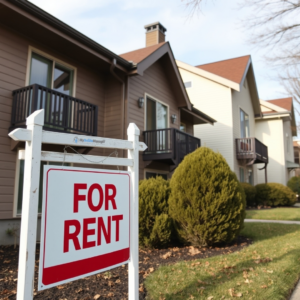In recent years, the U.S. rental housing market has undergone significant changes, shaped by economic conditions, shifts in supply and demand, and evolving consumer behavior. While the rapid increases in rent prices seen in the past few years have slowed, costs remain historically high, creating ongoing challenges for renters nationwide. With multifamily housing construction reaching its highest levels in decades, many are questioning whether this influx of new units will help stabilize or lower rental prices.
According to recent reports, the average asking rent in August 2024 stood at $1,645, representing a notable increase from two years ago. However, the pace of rent hikes has moderated compared to the record-setting spikes seen in 2022. (abc3340.com)
Surge in Multifamily Construction
One of the most significant developments in the housing market is the boom in multifamily housing construction. Over the past few years, builders have ramped up apartment complex projects to meet growing rental demand, leading to the highest level of new supply entering the market in decades.
In June 2024 alone, the completion of multifamily units hit levels not seen since the 1980s. This surge in construction was fueled by the strong demand for rental housing, a trend exacerbated by rising mortgage rates that have made homeownership less attainable for many Americans.
According to data from the U.S. Census Bureau, an estimated 482,000 new multifamily units were completed in 2023, with projections showing continued robust construction through 2025. However, while increased supply generally helps moderate rent growth, the effects vary widely by location. (abc3340.com)
Stabilizing Yet Elevated Rent Prices
Despite the influx of new apartment units, rent prices remain elevated. While the extreme rent hikes of 2021 and 2022 have tapered off, prices are still significantly higher than pre-pandemic levels.
In 2022, rent prices surged by as much as 16.2% year-over-year at their peak. By contrast, in 2024, rental increases have cooled to around 3.6% annually. While this marks a significant slowdown, it still represents an ongoing financial burden for many renters. Many of these increases are tied to inflation, rising property taxes, and landlords’ efforts to recoup pandemic-era losses. (abc3340.com)
Economic Factors Influencing the Market
Several macroeconomic factors play a key role in shaping rental trends:
- Interest Rates: The Federal Reserve’s monetary policies have led to higher borrowing costs, pushing potential homebuyers to remain in the rental market longer. With 30-year fixed mortgage rates hovering around 7%, many first-time buyers are finding it difficult to afford homeownership, keeping demand for rentals high.
- Inflation & Cost of Living: The broader inflationary environment has impacted both renters and landlords. Rising maintenance costs, insurance premiums, and property taxes have prompted many landlords to raise rents to cover their expenses. Meanwhile, wage growth has struggled to keep pace with rent increases, putting financial pressure on many tenants.
- Job Market & Remote Work Trends: The rise of remote and hybrid work models has also influenced rental demand in different ways. While urban centers saw a temporary dip in rental demand during the pandemic, many renters are now returning to cities for job opportunities, revitalizing demand in major metropolitan areas.
Regional Variations in Rental Trends
Not all rental markets are experiencing the same trends. While some cities continue to see rising rents, others are beginning to experience price declines due to increased housing supply.
For example, cities like Austin and San Antonio, Texas, have seen a slight dip in rental prices due to an oversupply of new apartments. In San Antonio, 14,500 new apartment complexes were built in the past year, but only 7,630 units have been rented out, leading to higher vacancy rates and more competitive pricing.
Meanwhile, in cities like Miami, Los Angeles, and New York, demand remains strong, and rents have stayed high due to a combination of limited housing supply and ongoing population growth. (mysanantonio.com)
Future Outlook
The future of the rental market will largely depend on how supply and demand dynamics evolve over the next few years. While the increase in multifamily construction is helping to moderate rent growth, economic uncertainties and high living costs may continue to exert upward pressure on prices.
Looking ahead, potential shifts in interest rates, wage growth, and government policies on housing affordability will be key factors to watch. If mortgage rates decline, more renters may transition into homeownership, reducing pressure on the rental market. Additionally, local governments may explore rent control measures or incentives for affordable housing development to address rising costs.
For renters, staying informed about market trends and considering alternative housing markets with lower rental costs may be crucial strategies in navigating the evolving rental landscape.
Source: Rental prices remain steady with new units hitting the market but prices remain high

